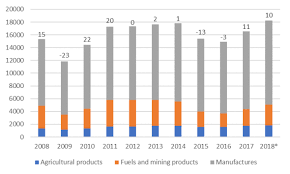Handbook on Agro Based Industries (Garlic Oil and Powder, Biomass Briquettes from Bio Waste, Moringa Oleifera (Drumstick) Powder, Dehydrated Onion, Aloe Vera Gel and Powder, Cashew Nut Shell Oil and Cardanol, Rice Powder, Puttu and Wheat Powder, Fructose Syrup from Broken Rice, Potato Powder, Granules and Pellets, Rice Flakes and Puffed Rice, Cashew Nut Processing Unit, Banana, Onion, Orange and Tomato Powder & Disposable Plate and Cups from Waste Rice Husk Powder)

The term "agro" refers to agriculture, which is the cultivation of crops and the rearing of animals for various purposes. The agro-based industry, "agro" encompasses all the activities related to farming, including growing crops, raising livestock, and harvesting natural resources. Agro is the foundation of the agro-based industry, as it involves the production of raw materials and agricultural products that are essential for various sectors. This includes crops such as grains, fruits, vegetables, and oilseeds, as well as livestock such as cattle, poultry, and fish.
Agro-based industries use these agricultural products as raw materials for further processing and manufacturing. For example, crops can be processed into food products such as flour, oil, and beverages, while livestock can be processed into meat, dairy products, and leather. In addition to food and beverages, the agro based industry also includes sectors such as biofuels, forestry, and fisheries. Biofuels are derived from agricultural crops and are used as an alternative to traditional fossil fuels. Forestry involves the sustainable management of forests and the production of wood products. Fisheries focus on the breeding and harvesting of fish and other aquatic organisms.
Agro is the backbone of the agro-based industry, providing the necessary raw materials and resources for various sectors. It is an integral part of our economy and plays a vital role in meeting the growing demand for food, fuel, and fiber products.

India is one of the largest producers of food, and is the second largest producer of rice, wheat, fruits, and vegetables in the world. Nearly 70% of the population depends on agriculture and agro-based industries. Since it would cause diversification and commercialization of agriculture, it will thus enhance the incomes of farmers and create food surpluses. It is a well-recognized fact across the world, particularly in the context of industrial development that the importance of agro industries is relative to agriculture increases as economies develop. It should be emphasized that food is not just produce. Food also encompasses a wide variety of processed products. It is in this sense that the agro-industry is an important and vital part of the manufacturing sector in developing countries and the means for building industrial capacities. The development of agro-based industries commenced during pre-independence days. Cotton mills, sugar mills, jute mills were fostered in the corporate sector.
The major contents of the book are production of Garlic Oil and Powder, Biomass Briquettes from Bio Waste, Moringa Oleifera (Drumstick) Powder, Dehydrated Onion, Aloe Vera Gel and Powder, Cashew Nut Shell Oil and Cardanol, Rice Powder, Puttu and Wheat Powder, Fructose Syrup from Broken Rice, Potato Powder, Granules and Pellets, Rice Flakes and Puffed Rice, Cashew Nut Processing Unit, Banana, Onion, Orange and Tomato Powder, Disposable Plate and Cups from Waste Rice Husk Powder with Manufacturing Process, Project Profiles (with cost estimation) and process flow diagrams. This book is also a fantastic resource for people interested in or who have worked in the Agro Based industry.
Profitable and viable business opportunities exist in the Agro sector. As a result, creating your own business is a good way to get into it. To learn more about Agro based industry in depth, read this book. It will assist you in figuring out how to establish your own Agro Business. Because of the increasing demand for Agro based Products in today's market, it's a terrific method to earn money.










